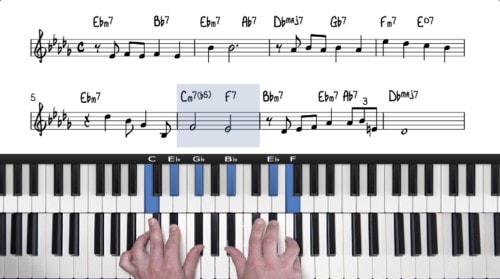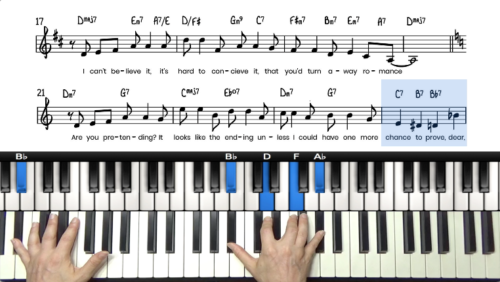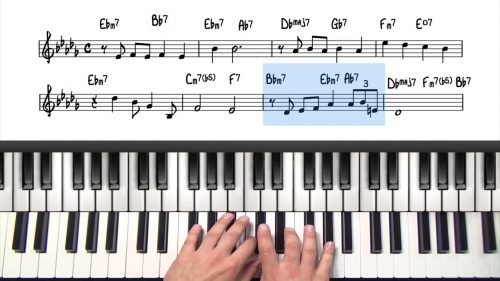Db Major Spread Voicings
In this lesson we explore the key Db major, starting with the major scale and then the diatonic 7th chords constructed on each degree of the scale.
We begin by examining triads and then progress to transforming them into 7th chords. We also demonstrate some practical exercises for converting root position 7th chords into two-handed spread voicings.
Two-Handed Spread Voicings
To create two-handed spread voicings, we take the basic root position configuration of 7th chords and distribute the notes between both hands:

This voicing style achieves a more balanced sound and helps us to command a broader range of the piano keyboard which is important for solo piano performance.
Common Chord Progressions
The most effective method for memorising a tune is to identify the common chord progressions and analyse these from a numeric standpoint.
In this lesson we explore the II-V-I and III-VI-II-V-I progressions in the key of Db major.
“Body & Soul” Harmonic Analysis
To finish this lesson we conclude by conducting a brief numeric harmony analysis of the A section of the tune. As we see, the vast majority of the harmony can be related directly to the diatonic 7th chords.
Lesson Downloads
-
Db Major Key Discovery File Type: pdf
Practice Tips
-
Start by familiarising yourself with the Db major key and the diatonic triads that are built on each degree of the scale.
-
Next build the 7th chords and split the notes of the voicings between 2 hands. This is a very important exercise so revisit it on a daily basis until you can play up and down the scale comfortably.
-
Next practice the chord progressions outlined in chapter using the spread voicing technique.
-
Add handwritten notes to the lead sheet for the common progressions such as 251s and 36251s. Write this below, above, or next to the chord symbols.
-
This help us to identify common progressions when playing from lead sheets and also helps us to associate the chord symbols with the harmonic role that they play in relation to the key.







